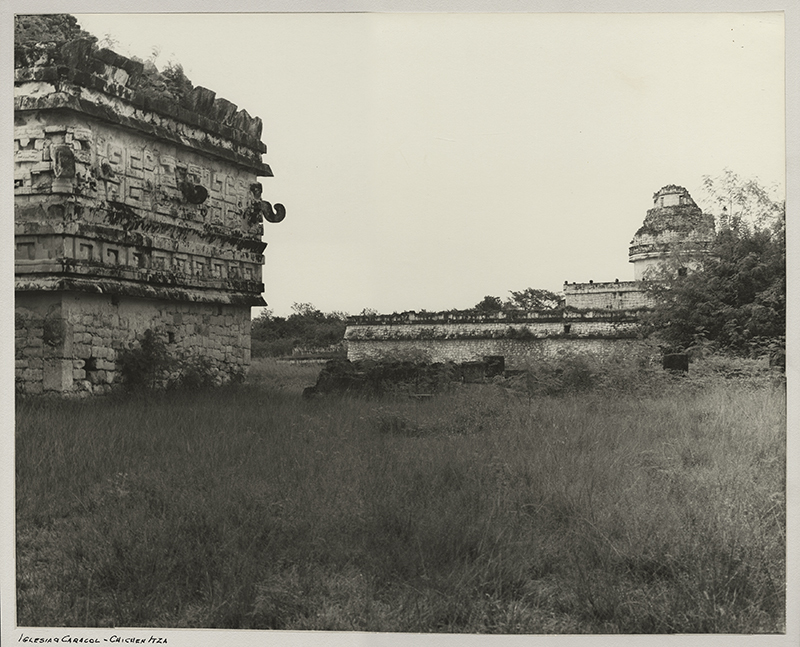
19th, 20th & 21st Century Fine Prints
707-546-7352 · fax 707-546-7924 · web: www.annexgalleries.com · email: artannex@aol.com
Iglesia & Caracol - Chichen Itza by Gordon Nicolson

Iglesia & Caracol - Chichen Itza
Gordon Nicolson
Iglesia & Caracol - Chichen Itza
Gordon Nicolson
1891 - 1975 (biography)From a series of photographs of pre-Columbian ruins by Gordon Nicolson.
El Caracol, the Observatory, is a unique structure at the pre-Columbian Maya civilization site of Chichen Itza. El Caracol means "snail" in Spanish and it was given that name because of the spiral staircase inside the tower. The structure is dated to around 906 AD, and it is suggested that the Caracol provided a way for the Mayan people to observe changes in the sky due to the flattened landscape of the Yucatan.
Chichen Itza is a site located on the northern center of the Yucatan. Chichen Itza was one of the largest Maya cities and it was likely to have been one of the mythical great cities, and also the most visited Mayan site on the peninsula.
When Chichen Itza was first settled it was largely agricultural. During the Central Phase of the Classic Period arts and sciences flourished. It was at this time that Chichen Itza became a religious center of increasing importance. From 800 to 925 A.D., the foundations of this magnificent civilization weakened, and the Maya abandoned their religious centers and the rural land around them. Chichen Itza was visited only to perform religious rites or bury the dead. By the 10th century A.D. they returned to Chichen Itza.


